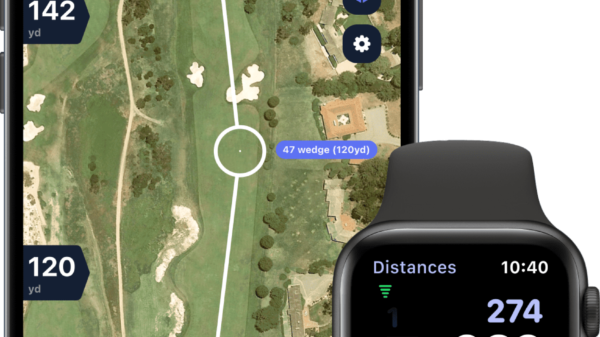AI with a Clear View: Exploring the Necessity of Explainable AI in Applications
Ever felt like you’re having a conversation with a genius who speaks in riddles? Imagine deciphering the cryptic decisions of AI, unravelling the enigma of its choices. Welcome to the cosmic spectacle of ‘Explainable AI‘ – where complexity meets clarity, and the dance of understanding begins.
Key Takeaways:
- Understanding AI’s Decisions: We’ve uncovered how AI makes decisions and learned ways to understand its choices.
- Interpreting Models: Techniques like Feature Importance and Model Visualization help us see why AI thinks a certain way.
- Attention Mechanisms: AI focuses on important parts of data like a spotlight on a stage, guiding its decisions.
- Various Explanation Tools: We explored different methods to decode AI’s reasoning, from rules to models like LIME and SHAP.
- Ethics and Laws: We considered the moral and legal side of AI, thinking about fairness and accountability.
- Learning About AI: Education and training help us all understand AI, making it less mysterious.
In the intricate labyrinth of modern technology, AI has emerged as both a marvel and a mystery, transforming the very fabric of our existence. As our lives intertwine with algorithms and data-driven decisions, a formidable question looms large: Can we truly fathom the enigmatic choices that artificial intelligence makes on our behalf?
Imagine a world where AI operates in the shadows, making decisions that shapee our destiny, yet offering no glimpse into the rationale behind its choices. This is the heart of the black-box AI dilemma – a realm where algorithms appear inscrutable, leaving us grappling with uncertainty. Our reliance on these digital wizards has surged, from voice assistants that understand our every word to autonomous vehicles navigating our bustling streets. Yet, with this reliance comes a paradox – as AI evolves, so does our yearning for transparency.
Enter the realm of Explainable AI, where scientists, researchers, and thinkers are fervently dissecting the intricate innards of these AI black boxes. The very essence of this quest is to decode the cryptic language of algorithms and shed light on the uncharted territories of decision-making. It’s like peering through the looking glass, a deliberate attempt to demystify the mesmerising dance of ones and zeros that orchestrate our digital world.
Picture this: a credit application is denied, a medical diagnosis is rendered, a legal prediction is pronounced. In the realm of AI, these outcomes are often determined by complex models lurking beneath the surface, their gears turning in silence. But what if we could pull back the curtain, revealing the gears and cogs responsible for these choices? What if we could trace the footsteps of logic within the sprawling labyrinth of neural networks?
Explainable AI emerges as the beacon of clarity in this fog of complexity. It’s not just about comprehending the ‘what’ of AI decisions, but also the ‘why’ – a quest to unearth the cognitive pathways that AI treads. Through this journey, we unravel the narrative woven by features, patterns, and relationships – an intricate tale of data interplay that defines our digital existence.

Feature Importance Analysis
Ah, the symphony of AI, a digital orchestra that plays with data’s very essence, composing melodies of prediction and insight. Yet, within this grand performance, lies a hidden layer of intrigue – the heartbeats of decisions that AI models take, the notes that make the magic happen. Welcome to the realm of Feature Importance Analysis, where the spotlight shines on the stars of data, unveiling their significance in the AI narrative.
- Unmasking the Maestros: The Dance of Features
Imagine an AI model as a grand conductor, orchestrating a mesmerising piece of music. But here’s the twist – each instrument represents a feature, a distinct facet of data. Now, as the performance unfolds, some instruments crescendo with prominence, while others hum softly in the background. This ebb and flow is the essence of Feature Importance Analysis – a process that unravels the choreography of features, revealing their sway in the grand symphony of AI decisions.
- The Ingenious Playbook: Permutation Feature Importance
Let’s dive into the playbook of AI interpreters – the Permutation Feature Importance. Imagine this: the conductor swaps out an instrument, say a violin, with a kazoo. The result? The melody stumbles, the harmony wavers. Similarly, in Permutation Feature Importance, features are shuffled, their importance gauged by how much the performance stumbles. If swapping out “age” for “shoe size” leaves the prediction faltering, you’ve just uncovered the value of “age” in the decision-making spotlight.
- shape: Unravelling the Ensemble Cast
Now, let’s spotlight shapeE, the rockstar method that spills the beans on individual feature contributions. Think of it as AI’s behind-the-scenes documentary. Each feature gets its moment in the spotlight, and shape values spill the beans on how much they influence the prediction. A high shape value for “income” might mean it’s belting out high notes in the decision choir, while a low value for “weather” might suggest it’s more of a background hum.
- LIME: Cracking Open the Black Box
Time to unravel the mystery with LIME – Local Interpretable Model-Agnostic Explanations. It’s like a detective reconstructing a crime scene. LIME crafts a simpler, transparent model mimicking the AI’s black-box decision. Feed it tweaked data, and if the mimic predicts similarly, you’ve just cracked the code. Imagine explaining Shakespeare to a toddler – LIME helps AI converse with us mere mortals, peeling away complexity for clarity.
- Real-world Overture: From Healthcare to Finance
Now, let’s savour the real-world crescendo of Feature Importance Analysis. In healthcare, imagine a diagnosis hanging on a few critical symptoms – Feature Importance Analysis pins those symptoms like stars on a map, guiding the physician’s hand. In finance, it’s the nuance of income, credit history, and age composing the credit score symphony. Each field dances to its own rhythm, but the tune is the same – features matter, and their importance paints the AI canvas.
Model Internals Visualization
Buckle up, fellow wanderers of the digital realm, for we are about to embark on a mind-bending journey. Picture this: you’re peering through a window into the inner sanctum of AI, where the gears turn, and decisions are etched. Welcome to the mesmerising world of Model Internals Visualization, where we unravel the arcane dance of AI’s thought process, one neuron at a time.
- Illuminating the Dark: Unveiling Model Behavior
Close your eyes and envision this: AI models as intricate mazes, pathways of information zigzagging, each twist and turn crafting the final decision. Model Internals Visualization is our flashlight, cutting through the labyrinthine complexity. It’s like gazing through an AI’s lens, revealing which parts of an input image fire up a neuron, steering the model’s attention. It’s the mind’s eye into the AI’s cognition, a portal to deciphering the unfathomable.
- Heatmaps and Activation Maps: AI’s Visual Diary
Imagine you’re watching a movie, and the screen suddenly comes alive with colours, each hue representing the emotions of characters. Now, apply this to AI. Heatmaps and activation maps are like the technicolor of AI’s thought process. They paint a vivid picture of where AI focuses, showing hotspots of interest on input data. As AI peers at an image of a cat, these maps light up whiskers, paws, and those enigmatic cat eyes, chronicling its thought journey.
- Unmasking the Enigma: Peering into CNN Layers
Ah, the enigmatic Convolutional Neural Networks (CNNs), the maestros of image recognition. But what’s truly bewitching is the visualisation of their inner layers. Imagine dissecting a symphony into its individual instruments – that’s what we’re doing here. Each layer is like a virtuoso playing its unique part, transforming pixels into meaning. As you traverse the layers, you uncover the gradual abstraction, from edges to textures to the breathtaking ‘aha!’ of recognition.
- Seeing to Believe: Visualisation Techniques
Hold your breath, for this is where the magic happens. Tinker with filters, tweak input data, and watch as AI’s inner workings unfurl. It’s like exploring an artist’s sketchbook – each stroke, each shade reveals the journey to the masterpiece. Visualising model internals is our map, navigating the convoluted landscapes of AI decisions. It’s not about deciphering the code, it’s about watching the gears turn, understanding the rhythm of AI’s digital heartbeat.
- Enchanting Possibilities: Applications Across Domains
Now, let’s cast a wider net, exploring the kaleidoscope of Model Internals Visualization applications. Imagine decoding medical scans, witnessing how AI scans a lesion, deciphering the cues that lead to a diagnosis. Think of self-driving cars, where AI’s eyes are our eyes, its decisions a lifeline. Model Internals Visualization lets us ride shotgun with AI, peering into its perspective, understanding its judgement. It’s not just a window; it’s a bridge to AI’s soul.
- The Ethereal Dance: Unveiling Model Biases
Ah, but let’s not forget the dance partners – biases that waltz within AI’s algorithms. Model Internals Visualization becomes our critical lens, spotlighting biases that may emerge. It’s a mirror that reflects AI’s flaws, enabling us to rectify, recalibrate, and stride toward fairness. Like a conductor steering an orchestra toward harmony, Model Internals Visualization guides AI’s steps toward equilibrium.
Rule-based Explanations
Hold onto your hats, curious minds, for we’re about to dive into a realm where logic weaves its intricate tapestry. Imagine, if you will, AI as a cosmic detective, deciphering mysteries hidden within data galaxies. Enter the stage, Rule-based Explanations – the Sherlock Holmes of AI, armed not with a magnifying glass, but with IF-THEN rules and decision trees.
- The Logic Labyrinth: Decoding Rule-based Systems
Ever marvelled at how humans make decisions based on well-defined rules? Think of a “No shirt, no shoes, no service” sign at a cafe. It’s the same in AI, but with a sprinkle of digital magic. Rule-based systems work like a collection of road signs for AI, guiding its choices through the data highway. When a condition is met (IF), AI responds with a specific action (THEN). It’s like a treasure map for AI, leading it to the proverbial X that marks the decision spot.
- IF-THEN Tales: Crafting Transparent Logic
Imagine sifting through a collection of fairy tales, each unfolding with an ‘if’ and ‘then.’ Rule-based Explanations are no different – they’re the bedtime stories AI whispers to itself. “IF the temperature is high, THEN wear sunglasses.” See, it’s all about setting up clear boundaries, like a magical fence, within which AI roams. These rules unravel AI’s decision-making, turning a complex dance into simple steps that even a digital novice can follow.
- Decision Trees: Nature’s Blueprint for AI
Step into the forest of AI, where decision trees stand tall like ancient oaks. Each branch, each leaf, signifies a decision path taken by AI. It’s like Mother Nature’s blueprint for logic. Picture AI as a woodland wanderer – it encounters a fork in the path, and like a woodland Sherlock, consults the decision tree. “Is it raining? Yes? Wear a raincoat. No? Move to the next fork.” Decision trees map AI’s mind, making its choices as clear as a babbling brook.
- The Grand Symphony of Transparency and Limitations
Ah, but every symphony has its crescendos and quiet moments. Rule-based Explanations dance with the melody of transparency, allowing us to peer into AI’s soul. Yet, like a gentle whisper in a thunderstorm, there are limitations. Rule-based systems are great for simple tales, but complex narratives might leave AI stuttering. It’s like explaining Shakespeare to a toddler – some parts make sense, others… not so much.
- Rule-based in Action: From Medicine to Finance
Let’s unfurl the scroll of real-world enchantment. In medicine, Rule-based Explanations guide AI in diagnosing ailments, mirroring a doctor’s expertise. In finance, they sift through the labyrinth of transactions, unmasking fraudulent ones. It’s as if AI is handed a magnifying glass and a pipe, embodying Sherlock himself, solving mysteries that once seemed inscrutable.
- Navigating the Seas of Interpretability and Beyond
As our voyage through Rule-based Explanations nears its shore, we must ponder the broader horizon. It’s not just about clear skies and smooth sailing; it’s about steering AI’s ship through stormy waters of ethics and fairness. Rule-based systems, like guiding stars, offer transparency, but they’re not immune to biases. As we navigate the seas of AI, let’s remember that rules, though powerful, can sometimes sway to their own tunes.
Local Interpretable Model-Agnostic Explanations (LIME)
Alright, folks, fasten your seatbelts because we’re about to take a wild ride through the matrix of AI’s mind. Imagine this: AI, the enigmatic genius behind the scenes, churning out predictions like a wizard casting spells. But hold on a second, what if I told you that we can actually pull back the curtain on this digital sorcery? Say hello to LIME – the decoder rings to AI’s cryptic messages.
- LIME Unveiled: A Glimpse into AI’s Mind Palace
It’s like stepping into the shoes of AI, understanding how it rolls the dice, without needing a degree in computer wizardry. LIME, Local Interpretable Model-Agnostic Explanations, is the Rosetta Stone of AI. It’s a bit like summoning a doppelganger of AI, a twin that thinks and behaves just like the original. This twin lets us in on the secret sauce – how it transforms data into decisions, pixel by pixel, word by word.
- The Art of Imitation: Mimicking AI’s Thought Patterns
Imagine this: you’ve been tasked to impersonate Shakespeare’s writing style. How would you do it? LIME takes the same approach. It crafts a simpler, transparent model that pretends to be AI. This model may not be as powerful as AI, but it’s like the decoder ring that helps us understand AI’s encrypted messages. By feeding this mimic model slightly altered data, we watch as it dances to the same tune, predicting outcomes just like the original AI.
- Perturbation Palooza: Unmasking AI’s Black Box
Hold onto your hats because things are about to get seriously funky. LIME works its magic through perturbation – imagine shaking up a snow globe to see how the flakes settle. In this case, data is the snow, and perturbation is our magical shake. By tweaking bits of input data, LIME unveils how sensitive AI is to these changes. If a tiny tweak to an image switches AI’s verdict from “cat” to “dog,” you’ve just cracked open the black box a bit wider.
- LIME Across Dimensions: Text, Images, and Beyond
Now, let’s journey through the portal of possibilities. LIME isn’t confined to a single realm – it’s our versatile guide across dimensions. Whether it’s text, images, or data tables, LIME adapts its interpretative goggles to peer inside AI’s head. Imagine deciphering the rationale behind AI’s labelling of images – is it focusing on the snazzy sunglasses or the fluffy tail? LIME zooms in, letting us snoop on AI’s thoughts.
- Navigating the Grey Areas: The Good, the Bad, and the Unstable
But wait, there’s a twist in this tale. LIME isn’t a silver bullet; it’s more like a trusty sidekick. Sometimes, LIME might struggle to mimic AI, especially when AI’s decisions are flip-flopping like a fish out of water. It’s like teaching a parrot to sing a tune when the tune keeps changing. This glimpse into the grey areas reminds us that while LIME shines light on AI’s decisions, it’s not immune to the shades of uncertainty.
- Real-world Wizardry: From Medicine to FinTech
LIME’s not just a party trick; it’s the real deal, illuminating AI’s path in the real world. Imagine AI diagnosing diseases or granting financial loans. LIME is the flashlight guiding us through the AI labyrinth, showing why a patient received a “thumbs up” or why a loan application was flagged. It’s like having a backstage pass to AI’s grand show, letting us applaud or critique its every move.
Shape (shapeley Additive exPlanations) Framework
Hold onto your neural networks, folks, because we’re about to journey into the heart of AI’s Rubik’s Cube, where mystery meets revelation. Imagine AI as a cosmic riddle-solver, crunching data like a savant, casting predictions that seem like digital sorcery. But guess what? The enigma has an interpreter, and it’s called shape – the decoder ring to AI’s cryptic messages.
- shape Unleashed: Decoding AI’s Masterpiece
Get ready to don your detective hat and wade through the matrix of AI’s mind. shape, which stands for shapeley Additive exPlanations, is like the Rosetta Stone of AI’s language. It’s as if we’re deciphering a symphony – each note, each chord reveals a piece of the melody. shape lets us pick apart the code behind AI’s predictions, pixel by pixel, feature by feature, in a dance of interpretation.
- The shapeley Value: AI’s Fair Play Equation
Imagine you’re in a treasure hunt, and each teammate deserves a cut of the bounty based on their contribution. That’s the shapeley value – it assigns credit fairly. Now, translate this to AI. shape delves into AI’s brain, figuring out the “aha!” moments, the light bulbs that go off when certain features light up. It’s like giving credit where credit is due, unravelling AI’s complex tapestry.
- Illuminating the Unknown: The Game-theoretic Magic
Time to put on your magician’s cape, because we’re about to conjure a bit of game theory into the mix. shape values are like the currency of influence in a game, where each feature contributes its fair share to the final prediction. Imagine AI as a board game – every player (feature) strategize to win, but at the end of the game, the prize (prediction) is divvied up fairly. shape’s game-theoretic magic reveals each player’s worth.
- shape’s Marvellous Performance: Local and Global Interpretability
Picture this: AI as a cosmic storyteller, revealing its tales through predictions. shape lets us zoom in for close-ups or pan out for the big picture. It’s like AI’s own spotlight, highlighting each feature’s role in a local performance (prediction) or handing us a panoramic view of its global narrative (overall model behaviour). Whether it’s dissecting a single prediction or mapping the entire AI landscape, shape makes the invisible visible.
- Trust in Complexity: shape as the Pillar of Transparency
Trust in AI is like crafting a bridge over a chasm – you want a solid foundation. That’s where shape comes in, like the cornerstone of transparency. It’s not just about accepting predictions; it’s about understanding why they were made. Whether AI is predicting your movie preferences or diagnosing diseases, shape reveals the decision-making blueprint, earning our trust one shape value at a time.
- Real-world Sorcery: From Healthcare to Marketing
shape isn’t just theoretical hocus-pocus; it’s practical magic too. Imagine AI diagnosing illnesses or personalising ads. shape is the wizard’s wand that illuminates AI’s logic, showing us why a patient received a certain diagnosis or why a product recommendation was made. It’s like having a backstage pass to AI’s grand performance, letting us see how the magician pulls off the tricks.
Counterfactual Explanations
Hold onto your hats, because we’re about to venture into the realm of AI’s crystal ball, where the past meets the present, and the “what-ifs” paint the future. Imagine AI as a cosmic time traveller, making predictions like a modern-day Nostradamus. But here’s the twist – what if I told you we can rewind time, tweak a few variables, and decode the logic behind AI’s choices? Say hello to Counterfactual Explanations – the key to deciphering AI’s intricate puzzle.
- Unravelling the Counterfactual Conundrum
Imagine taking a trip down memory lane, but with a twist. Counterfactual explanations let us rewind the clock and play a game of “what if.” It’s like rewriting history, testing how AI would dance to a different tune. Picture this: you apply for a loan, but it’s denied. Now, with counterfactuals, we explore what changes could have led to a different outcome. It’s like giving AI a time machine, letting it tell us why it zigged when we thought it would zag.
- The ‘What-If’ Chronicles: Crafting Parallel Realities
Imagine you’re crafting a parallel universe, where a slight breeze could change the course of destiny. Counterfactuals are the architects of these alternate realities. By altering variables, we nudge AI’s predictions, watching how they ripple across the decision landscape. It’s as if we’re sliding puzzle pieces to see how the picture changes. Did a higher credit score lead to loan approval? Or did a bump in income tip the scales? Counterfactuals let us walk down the path not taken.
- The Butterfly Effect: AI’s Ripple in Time
Now, picture a butterfly flapping its wings, causing a hurricane on the other side of the world. That’s the Butterfly Effect, and AI has its own version. Counterfactuals reveal how AI’s choices reverberate across its decision-making cosmos. It’s as if AI is a cosmic chess player, strategizing its moves, contemplating the “what-ifs.” By tweaking variables and observing outcomes, counterfactuals demystify AI’s intricate dance, showing us the tango of causality.
- The Wizardry of Causality and Interpretability
Imagine peering through a crystal ball that reveals the hidden threads of causality. Counterfactual explanations aren’t just magic tricks; they’re glimpses into AI’s cause-and-effect labyrinth. It’s as if AI is a detective reconstructing a crime scene, pointing out the pivotal moments that shapeed the final verdict. Did AI’s decision hinge on income, age, or education? Counterfactuals unravel the web, laying bare the causal connections.
- shapeing Outcomes: Real-world Applications
Hold onto your time-turners, because counterfactuals aren’t just theoretical fun – they’re practical sorcery too. Imagine AI making medical diagnoses or settling insurance claims. Counterfactuals guide us through the maze of AI’s logic, unveiling why a patient received a certain diagnosis or why a claim was denied. It’s like having a backstage pass to AI’s decision-making theatre, watching as the curtains rise on the causal drama.
- The Road Less Travelled: Between Logic and Ambiguity
As we bid adieu to the realm of counterfactuals, let’s ponder the road less travelled. Counterfactual explanations let us navigate the crossroads of logic and ambiguity. They’re like lanterns guiding us through the fog, illuminating the twists and turns of AI’s choices. But like any journey, we must remember that counterfactuals are a glimpse into a realm of endless possibilities, a dance between reality and conjecture.
Attention Mechanisms for Sequence Data
Alright, time to put on our detective hats and dive into the captivating world of AI’s Sherlock Holmes – the Attention Mechanisms. Imagine AI as a wordsmith, deciphering the intricate tales hidden within sequences of data. But wait, there’s a twist – what if I told you that AI doesn’t just read these sequences like a book but instead, focuses its attention like a spotlight on the most crucial parts? Say hello to the enchanting realm of Attention Mechanisms, where the spotlight dances on the stage of sequence data.
- The Dance of Focus: Unveiling Attention Mechanisms
Close your eyes and imagine a spotlight sweeping across a theatre stage, illuminating one actor after another. Attention Mechanisms are like that spotlight, guiding AI’s gaze through sequences – be it words, musical notes, or any sequence of data. It’s as if AI is whispering, “Pay attention to this, it’s important!” These mechanisms help AI sift through the noise, highlighting what truly matters in the grand tapestry of data.
- A Symphony of Weights: How Attention Works
Now, let’s peel back the curtain and see how the magic unfolds. Imagine AI as a conductor, waving its baton across an orchestra of data. Attention Mechanisms assign weights to different elements, like giving soloists their time in the spotlight. It’s like tuning into a radio station – some frequencies are louder, clearer, more attention-grabbing. Similarly, attention mechanisms let AI dial up the volume on specific parts of a sequence, creating a melody of focus.
- Self-Attention: AI’s Inner Monologue
Picture AI as a philosopher engaged in deep introspection. Self-attention is like AI’s inner monologue, analysing each part of a sequence while considering the context of the entire conversation. Imagine reading a story and connecting the dots – self-attention lets AI connect the words, the phrases, the sentences, weaving them into a coherent narrative. It’s as if AI is not just reading the words but feeling the pulse of the story.
- Multi-head Attention: The Ensemble Cast
Envision AI as a theatre director orchestrating an intricate play. Multi-head attention is like having multiple directors, each with their own vision. It’s as if AI is gathering perspectives from different angles, creating a multi-dimensional understanding of the sequence. Imagine reading a novel and discussing it with friends from different backgrounds – you get a more comprehensive grasp of the story’s nuances. Multi-head attention lets AI dissect the sequence from various viewpoints.
- Sequences Unveiled: From NLP to Time Series Data
Now, let’s step into the real-world spotlight. Imagine AI translating languages, where each word influences the translation. Attention Mechanisms dissect the sequence, focusing on relevant words while weaving them into a coherent translation. Think about stock market predictions – time series data. Attention Mechanisms examine the ebb and flow of data, zooming in on the fluctuations that truly matter. It’s like AI being the conductor of a financial symphony, highlighting the crescendos and decrescendos.
- The Paradox of Focus and Ambiguity
As we bid adieu to the mesmerising world of Attention Mechanisms, let’s contemplate the paradox they present. While they bring clarity and focus, they also remind us of the vast sea of ambiguity. Attention Mechanisms spotlight what AI deems significant, but what about the gems hidden in the shadows? Just like a spotlight can’t illuminate every corner of a room, attention mechanisms might miss some subtle nuances.
Metrics for Explainability
Alright, let’s embark on a journey through the labyrinth of AI’s inner workings, where numbers dance, and concepts collide. Imagine AI as an intricate puzzle, its decisions shrouded in digital mystique. But what if I told you that we have a toolkit of metrics, a compass to navigate the fog of AI’s logic? Enter the stage, Metrics for Explainability – the secret language that unravels AI’s enigma, one number at a time.
- Decoding the Unseen: Unmasking Explainability Metrics
Close your eyes and imagine AI’s decisions as a cosmic riddle, its code weaving an intricate tapestry of predictions. Explainability Metrics are like spectral glasses, allowing us to see beyond the surface, unveiling the hidden mechanics. It’s as if we’re deciphering a musical score, each metric a note, each prediction a symphony. These metrics measure the harmony of understanding, the rhythm of AI’s logic.
- The Fidelity Quest: Probing Model-Agnostic Metrics
Imagine you’re translating a masterpiece into a different language – how faithful are you to the original’s essence? Fidelity Metrics takes a similar quest. They examine how well an explanation aligns with AI’s thinking. It’s like comparing your translation to the spirit of the masterpiece. Did the explanation capture the crux of AI’s decision, or did it lose its melody in translation? Fidelity Metrics are our compass, guiding us to authentic understanding.
- Complexity at a Glance: Simplicity Metrics
Now, envision AI as an intricate tapestry, woven with threads of complexity. Simplicity Metrics are like skilled weavers, assessing how simple an explanation is without sacrificing accuracy. It’s like crafting a sculpture – removing the excess clay while retaining the essence. Simplicity Metrics ensure that explanations are like a clear stream, easy to follow yet deep enough to dive into. They strike the balance between clarity and accuracy.
- Perturbation and Sensitivity: Trust in Robustness
Imagine AI as a delicate balance, swaying with the winds of data perturbation. Perturbation Metrics examine AI’s stability – how much can we shake up the data before AI’s decision wobbles? It’s like testing a bridge’s stability by adding weights. Sensitivity Metrics, on the other hand, reveal the pulse of AI’s predictions, showcasing how slight variations in input sway the outcome. These metrics are like stress tests for AI’s logic, ensuring it stands strong.
- In the Eye of the Beholder: Human-centric Metrics
Envision AI’s decisions through human eyes, and you unveil a new dimension. Human-centric Metrics gauge how well explanations resonate with us mere mortals. It’s like rating a translation based on how well it captures the emotion of the original. These metrics ensure that AI’s decisions don’t just make sense to the machines but also to the minds they serve – us.
- The Unveiling of AI’s Enigma: Balancing Metrics
As we conclude our exploration of Metrics for Explainability, let’s ponder the balance they strike. Just like an artist juggles colours on a canvas, these metrics weigh different facets of AI’s understanding. They’re like scales, ensuring that AI’s decisions aren’t just accurate but also comprehensible, not just stable but also robust. The metrics’ dance strikes the equilibrium between complexity and simplicity, between AI’s language and ours.
User Studies and Feedback
Alright, fellow explorers of the AI frontier, let’s buckle up for a ride that takes us deep into the heart of human-AI interaction. Imagine this: AI as a conversation partner, its decisions a dance of electrons and algorithms. But hold on tight, because we’re about to unveil a crucial chapter in the saga of Explainable AI – User Studies and Feedback. It’s like peering into the looking glass, where the reflections of human understanding and AI’s reasoning collide.
- The Human Touch: Unveiling User Studies
Close your eyes and picture AI as a puzzle – intricate and fascinating, but how well do humans really piece it together? User Studies are like a voyage into the minds of humans, seeking to understand how well they comprehend AI’s decisions. Imagine a journey through a labyrinth – User Studies guide us through the twists and turns of human-AI interaction, showing us where the map is clear and where it’s shrouded in fog.
- The Dialogue Unfolds: Conversations with Users
Now, let’s imagine AI as a chatterbox, sharing its thoughts through predictions. User Studies are like eavesdropping on this cosmic conversation. It’s as if we’re sitting at a cafe, listening to AI and humans exchange ideas. Do users nod in understanding, or do furrowed brows reveal confusion? User Studies capture these nuances, painting a portrait of the dialogue that happens when AI steps onto the stage.
- The Grand Experiment: Designing User-Centric Trials
Envision AI as a scientist conducting a grand experiment, where humans are the subjects. User Studies are the tools of this experiment, revealing how well AI’s explanations hit the mark. It’s like testing a new recipe – do the flavours blend harmoniously, or is something amiss? By crafting user-centric trials, we unveil the intricate dance between AI’s outputs and human comprehension.
- The User’s Looking Glass: Feedback Loop
Imagine AI as a mirror reflecting human expectations, desires, and needs. User Feedback is like the user’s looking glass – it lets them see their reflections in AI’s decisions. When users offer feedback, they’re shaping AI’s evolution. It’s like refining a sculpture based on viewer opinions. User Feedback ensures that AI’s decisions resonate with its audience, making the cosmic conversation a harmonious exchange.
- A Tapestry of Insights: Bridging the Gap
Now, let’s journey from theory to practice. Imagine AI assisting in medical diagnoses – a realm where AI’s decisions impact lives. User Studies and Feedback weave a tapestry of insights, showing us how doctors interpret AI’s suggestions, whether they embrace them like old friends or regard them with scepticism. It’s like watching a play – User Studies and Feedback fill the auditorium with insights, bridging the gap between AI’s reasoning and human intuition.
- The Human-AI Waltz: Challenges and Triumphs
As we bid adieu to the realm of User Studies and Feedback, let’s acknowledge the dance they share with AI. Like a waltz, they twirl through challenges and triumphs. They reveal that human understanding of AI is a tango between clarity and ambiguity, comprehension and puzzlement. The feedback loop is a symphony – each note, each suggestion, shapees AI’s melody, turning it into a harmonious collaboration.
Hybrid Approaches for Comprehensive Explanations
Alright, gather ’round, curious minds, because we’re about to dive into the realm where AI’s complexity meets the elegance of human understanding. Imagine AI as a complex puzzle, its decisions a symphony of data and algorithms. But here’s the twist – what if I told you that we can craft a tapestry of explanations that seamlessly weaves together various threads of insight? Welcome to the captivating world of Hybrid Approaches – the art of creating explanations that paint a panoramic picture of AI’s intricate dance.
- The Puzzle Unveiled: Navigating Hybrid Explanations
Close your eyes and picture AI’s decisions as a constellation of stars, each one a data point in the cosmos of reasoning. Hybrid Approaches are like celestial cartographers, mapping out the connections between these stars. It’s as if we’re piecing together a jigsaw puzzle, each explanation a part of the grand design. These approaches blend the vivid hues of different techniques, creating a canvas of understanding that’s both intricate and holistic.
- The Synthesis Symphony: Merging Model-Specific and Model-Agnostic
Now, imagine AI as a composer, crafting a symphony of explanations. Hybrid Approaches harmonise the melodies of Model-Specific and Model-Agnostic techniques. It’s like blending different musical instruments – the flute’s clarity with the violin’s depth. Model-Specific techniques focus on AI’s internal workings, while Model-Agnostic ones step back to see the bigger picture. Hybrid Approaches fuse these perspectives, creating an explanation that’s both intricate and comprehensive.
- Fusion of Interpretable Methods: Insights from All Corners
Envision AI as an explorer mapping uncharted territories. Hybrid Approaches are like combining maps from different explorers, each charting a unique path. These approaches fuse various interpretable methods – like merging a topographical map with a star chart. By blending different techniques, Hybrid Approaches offer insights from all corners, shedding light on AI’s decisions from multiple angles.
- The Quantum Entanglement of Explanations: Ensemble Techniques
Imagine AI as a quantum particle, its behaviour influenced by various forces. Hybrid Approaches leverage Ensemble Techniques, a bit like AI’s own quantum entanglement. It’s as if different explanations become intertwined, influencing each other’s significance. Ensemble Techniques combine individual explanations, forming a gestalt that’s more informative and robust. It’s like merging different coloured threads to create a tapestry that’s both intricate and harmonious.
- Complexity in Concert: Integrating Multiple Perspectives
Now, let’s move from theory to application. Imagine AI helping diagnose medical conditions – a field where AI’s decisions shapee lives. Hybrid Approaches act like a council of doctors, each bringing a unique perspective to the table. It’s as if AI’s decision is dissected under a multitude of microscopes. Hybrid Approaches integrate these perspectives, offering a comprehensive diagnosis that blends AI’s reasoning with human intuition.
- The Symphony’s Crescendo: Challenges and Future Avenues
As we conclude our exploration of Hybrid Approaches, let’s pause to reflect on the symphony they create. Like a crescendo, they build to a peak of understanding, revealing AI’s complexity through a tapestry of explanations. They offer a panoramic view, an all-encompassing embrace of AI’s reasoning. Yet, just like a symphony has its challenges, Hybrid Approaches face hurdles too. The future holds the promise of refining these techniques, fine-tuning the symphony for even greater clarity.
Ethical and Legal Implications
Alright, my fellow curious minds, prepare to venture into the ethical and legal labyrinth where AI’s brilliance meets the complexities of human values and laws. Picture AI as a digital sage, deciphering patterns with the finesse of a virtuoso pianist. But hold onto your hats, because what if I told you that this digital genius has a moral compass, and its decisions ripple through the realm of ethics and legality? Welcome to the realm of Ethical and Legal Implications – a cosmic dance where AI’s power intertwines with our ethical tapestry.
- Unveiling the Moral Quandaries: Navigating Ethical Considerations
Close your eyes and imagine AI as a cosmic detective, solving riddles with the precision of a master sleuth. Ethical Implications are like the flashlight guiding this detective through the maze of moral quandaries. It’s as if we’re exploring a labyrinth of choices, where each path has its own ethical markers. These implications shine a light on the hidden corners, revealing the delicate dance between AI’s capabilities and the moral values it engages with.
- The Code of Ethics: AI as the Digital Conscience
Now, imagine AI as a digital philosopher, pondering the nuances of right and wrong. Ethical Implications are like the compass that guides this philosopher’s musings. It’s as if we’re crafting a code of conduct, where AI follows the principles that mirror our ethical compass. These implications shapee the very foundation of AI’s decisions, ensuring that its brilliance aligns with the moral tapestry we weave.
- The Tug-of-War: Balancing Utility and Morality
Envision AI as a cosmic tightrope walker, balancing on the thin line between utility and morality. Ethical Implications are like the weights that tip the scale, nudging AI towards one side or the other. It’s as if we’re witnessing a tug-of-war between AI’s prowess and the ethical boundaries we set. These implications remind us that while AI can do incredible things, its actions must align with the moral fabric we’ve woven.
- The Legal Paradox: When Algorithms Meet the Courtroom
Imagine AI as a legal scholar, delving into the intricacies of law. Legal Implications are like the gavel that echoes through the courtroom of technology. It’s as if we’re writing a new chapter in the legal code, where AI’s decisions and actions intersect with the boundaries of the law. These implications unfold the legal paradox – how do we hold AI accountable when it’s both a creator and a follower of the law?
- Liability in the Digital Age: Who’s Responsible?
Now, let’s shift from theory to practice. Imagine AI diagnosing medical conditions – a domain where lives hang in the balance. Ethical and Legal Implications are like the scales of justice, weighing the question of responsibility. It’s as if we’re debating who should be held accountable if AI’s diagnosis goes awry. These implications navigate the labyrinth of liability, pondering the roles and responsibilities in this digital age.
- Ethical Compass and Legal Landscapes: Navigating the Future
As we conclude our exploration of Ethical and Legal Implications, let’s gaze into the crystal ball and glimpse the path ahead. Like a compass, these implications guide AI’s journey, ensuring it treads the moral high ground. But the road is not without challenges. The future holds the promise of defining ethical standards, shapeing legal landscapes, and crafting a harmonious dance between AI’s genius and our societal values.
Education and Training for Explainable AI
Hold onto your hats, fellow knowledge seekers, because we’re about to embark on a riveting journey through the realm where AI’s mysteries meet the human thirst for understanding. Imagine AI as an enigmatic teacher, unravelling the secrets of data and algorithms like a master storyteller. But here’s the twist – what if I told you that the pursuit of Explainable AI isn’t just about the AI itself, but also about equipping humans with the knowledge and tools to decipher its language? Welcome to the captivating world of Education and Training for Explainable AI – a cosmic classroom where AI becomes the subject and the sage.
- Decoding the AI Curriculum: Navigating Educational Frontiers
Close your eyes and picture AI as a vast treasure trove of knowledge, its insights hidden beneath layers of code and computation. Education and Training for Explainable AI are like the keys that unlock this treasure chest. It’s as if we’re exploring uncharted educational frontiers, where humans delve into the depths of AI’s reasoning. These educational endeavours pave the path to a deeper understanding of AI’s inner workings.
- The Explainer’s Toolkit: Empowering the Curious Mind
Now, imagine AI as an elaborate puzzle, its pieces scattered across the landscape of algorithms and data. Education and Training for Explainable AI provide the toolkit that empowers the curious mind to piece this puzzle together. It’s as if we’re arming ourselves with magnifying glasses, microscopes, and codebooks – tools that help us dissect AI’s decisions. These tools transform us from spectators to detectives, allowing us to peer behind the digital curtain.
- From AI Novices to Sages: Cultivating Expertise
Envision AI as a cosmic mentor, guiding us from ignorance to enlightenment. Education and Training for Explainable AI act like the syllabus for this transformative journey. It’s as if we’re students progressing from AI novices to sages, absorbing knowledge like sponges. These educational efforts cultivate expertise, nurturing a generation that not only understands AI but can also unravel its intricate tapestry of reasoning.
- The Language of AI: Bridging the Communication Gap
Imagine AI as a polyglot, speaking a language of data and algorithms. Education and Training for Explainable AI act as the language classes that bridge the communication gap between AI and humans. It’s as if we’re learning to converse with a digital oracle, deciphering its insights and asking meaningful questions. These educational pursuits make us fluent in the language of AI, transforming us into effective interpreters of its decisions.
- A Glimpse into the Future: AI-Powered Education
Now, let’s transition from theory to practice. Imagine AI as a tutor, guiding medical students through complex diagnoses. Education and Training for Explainable AI become a beacon of light, illuminating the path toward AI-powered education. It’s as if we’re entering an era where AI isn’t just the subject of study but also the instrument of learning. These educational endeavours provide a glimpse into a future where AI becomes a collaborative partner in our educational journey.
- The Learning Odyssey: Challenges and Horizon
As we wrap up our exploration of Education and Training for Explainable AI, let’s take a moment to gaze at the horizon. Like a ship embarking on a learning odyssey, these endeavours navigate uncharted waters. Challenges lie ahead – creating comprehensive curricula, fostering interdisciplinary collaborations, and staying updated in a rapidly evolving landscape. The future holds the promise of AI-powered education that not only enriches our understanding of AI but also reshapees how we learn about the world.

































